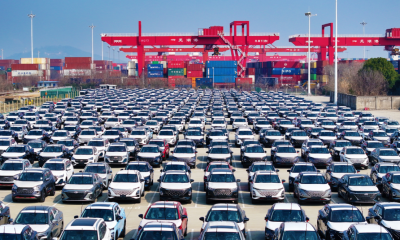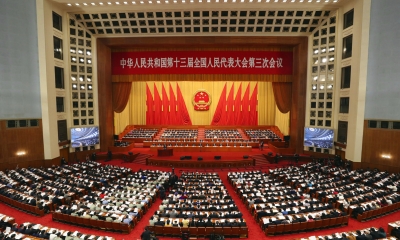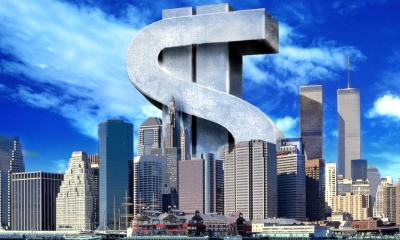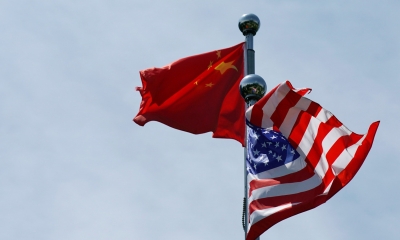The Absurd Reciprocal Tariff Will End in Failure
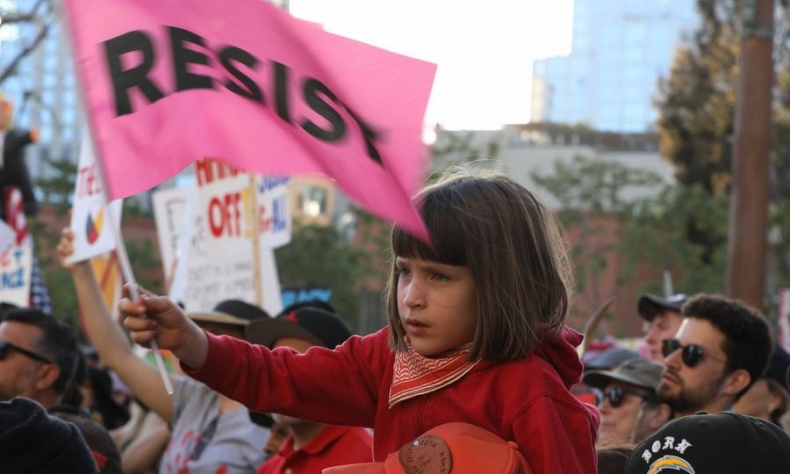
It can be anticipated that the ‘reciprocal tariff’, under strong worldwide opposition, effective retaliation from various trading partners, and fast worsening economic situation in the U.S., is doomed to failure.
U.S. President Donald Trump issued an executive order on April 2 to impose a worldwide 10 percent basic tariff and “reciprocal tariff rates” for individual countries and regions, with 34 percent on China, 20 percent on the EU, 45 percent on Vietnam, etc. It signifies the largest and most shameless unilateral tariff offensive since the end of WWII.
The mad “reciprocal” worldwide tariff reminds us of the Smoot-Hawley Act of 1930, which considerably raised tariffs worldwide to protect the U.S. economy entangled in the Great Depression, only to cause strong retaliations from the UK, France, Canada, etc. During the following three years, U.S. imports fell by 65.9 percent and exports fell by 61.1 percent, thus prolonging the Great Depression and causing a 65 percent fall in the world trade volume. It was the real reason why GATT came into being after World War II to correct the historical mistake and constitute a multilateral free trade mechanism, which ensured postwar world economy and trade growth until recent years. Now, the Trump administration wants to break the WTO and pull the world back to the pre-GATT years—a grave historic retreat.
The “reciprocal tariff” is totally in violation of WTO rules and thus illegal. WTO rules stipulate clearly that tariff levels are to be decided through multilateral, regional, or bilateral negotiations on the basis of non-discrimination and balance of interests. The U.S., as a member of the WTO, has no right to change the tariff levels unilaterally. The “reciprocal tariff”, covering all U.S. imports which stood at $3.3 trillion in 2024, constitutes an enormous and worldwide disaster to the world economy and trade.
The base of the “reciprocal tariff”, although self-labeled as “meticulous calculation”, is extremely ridiculous without any basis in economics. It is based on tariff disparity between the trading partner with the U.S., VAT rate and non-tariff restrictive measures quantified in tariff rates. The three components are added together to make the U.S. “grievance rate”. However, this table is only a mask, not the “reciprocal tariff rate”. The real “reciprocal tariff” is on another table showing the U.S. merchandise trade deficit with each trading partner. Divided by the U.S. imports from the former, it was the U.S. deficit rate, which, in turn was divided by 2, the figure is “reciprocal tariff rate”. For example, in 2024, U.S. imports from China stood at $438.9 billion, with a U.S. deficit of $295.4 billion; hence, the deficit rate was 67.3 percent. After division by 2, it was 34 percent— thus the “reciprocal tariff” on China. By the same method, U.S. imports from the EU were $605.8 billion with a deficit of $235.6 billion, hence a deficit rate of 39.4 percent, and after being divided by 2, the “reciprocal tariff” is 20 percent on the EU. Hence, the so-called “reciprocal tariff” is only a coefficient of the U.S. trade deficit. There is no logic between trade deficit and tariff level and thus, the “reciprocal tariff” has nothing to do with “reciprocal”, only an emotional narrative for political need.
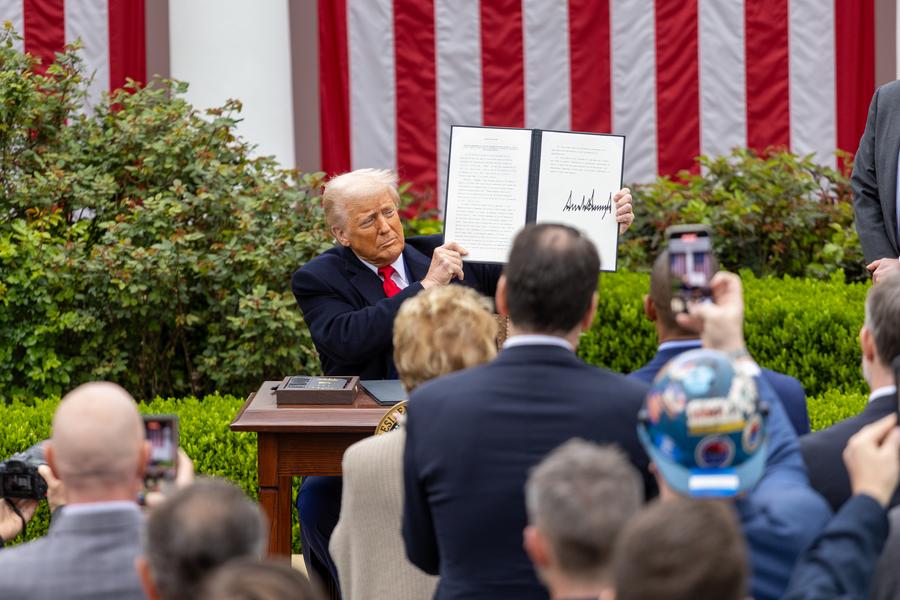
The central narrative of the “reciprocal tariff” is to bring down the U.S. trade deficit and bring manufacturing back to the U.S., so as “to make America great again” (MAGA). But neither of the two goals can be met. Tariffs will not wipe out the huge trade deficit. During the second term of the Obama presidency, no massive tariffs were imposed and the U.S. global trade deficit grew by only $4.8 billion. During Trump 1.0, massive tariffs were imposed on Chinese products and the U.S. global trade deficit grew by $166.1 billion. During the four years of the Joe Biden Administration, the massive tariff was kept and the U.S. global trade deficit swelled by $301.4 billion, breaking the $1.2 trillion barrier. In a single month of January 2025 only, it exceeded $150 billion in anticipation of Trump’s tariff. In February 2025, the Fed’s manufacturing production index stood at 100.0, the same as in 2017. Manufacturing return efforts by Trump 1.0 and Biden had no results, because trade flows are decided by comparative advantages and the global supply chain, not by tariffs. The U.S. Rust Belt area started to exist in the late 1970s. The vehement slogans by presidential candidates and presidents have been there for five decades, but the belt is still rust. Trump and his team might well know that trade balance and manufacturing return are something impossible. Still, he needs this slogan and the tariff for this slogan. It is a slogan only to keep his election base, and nothing more.
However, the “reciprocal tariff” caused a super storm in world trade and stock markets. During the two following trading days, the Dow Jones tumbled by 9.3 percent, S&P 500 by 10.8 percent and the NASDAQ by 12.0 percent. The WTO issued a warning that 2025 could see world trade volume fall by 1 percent, compared to 3 percent growth estimated at the beginning of the year. The IMF also warned of a considerable growth slowdown. However, one of the largest victims will be the U.S. itself. The Conference Board Consumer Expectations index fell to a 12-year low in late March, indicating a high possibility of a recession. FED Atlanta Reserve Bank model on April 1 showed a possible 3.7 percent fall in U.S. GDP during Q1. JP Morgan has revised upward the U.S. recession possibility to 60 percent. A Yale university lab report has estimated that a 25 percent average tariff rate worldwide and the same rate retaliation will lead to 2.1 to 2.6 percentage point increase in consumer price and an additional expenditure burden on American families, varying from $1,300 for low-income families, $2,100 for middle-income families and $5,400 for high-income families, all per year. Rather than “American Liberation”, the date of April 2 will most likely be “Trump Recession” or “Trump Stagflation”.

The basic logic that Trump and his team do not know, or pretend not to know that the tariff is paid by American importers and ultimately, American families, instead of the exporters. Hence, they have made a fatal mistake in imposing tariffs on their own.
They also do not know, or pretend not to know that, in many categories, America is not a buyer’s market, but rather the exporting countries seller’s market. This well explains why there has been an unprecedented shopping spree in American markets across the country: people are madly buying Chinese TVs, household daily necessities, etc., because they have no other choice. By the end of 2024, there were 254 items for which America depended 100 percent on Chinese supply, 1,006 items for 80-99.9 percent and 1,607 items for 50-79.9 percent. On the other hand, historical experience shows that the U.S. unilateral tariff always met with retaliations and thus the U.S. export also fell in a similar tempo as imports. This time, U.S. exports worldwide will also fall drastically. As a result, Trump has to compromise in the end.
Trump administration put a 34 percent tariff on all imports from China with an expectation that China would give in. He had never expected that China immediately announced an equal 34 percent tariff on all imports from the U.S., plus another 10 measures. It fully proves that China is extremely firm to uphold WTO rules to oppose the unilateral tariff from the U.S. and defend its own legitimate rights. It also proves that China is not in a weak position. It does not need to yield to absurd coercion and tariffs.
It can be anticipated that the “reciprocal tariff”, under strong worldwide opposition, effective retaliation from various trading partners, and fast worsening economic situation in the U.S., is doomed to failure. Sooner or later, the Trump Administration will have no choice but to revise down the tariff rates or even drop them, depending on individual cases. The “reciprocal tariff” will end in a humiliating failure. It might take months or years, but failure will be the inevitable consequence.
The article reflects the author’s opinions, and not necessarily the views of China Focus.
 Facebook
Facebook
 Twitter
Twitter
 Linkedin
Linkedin
 Google +
Google +




